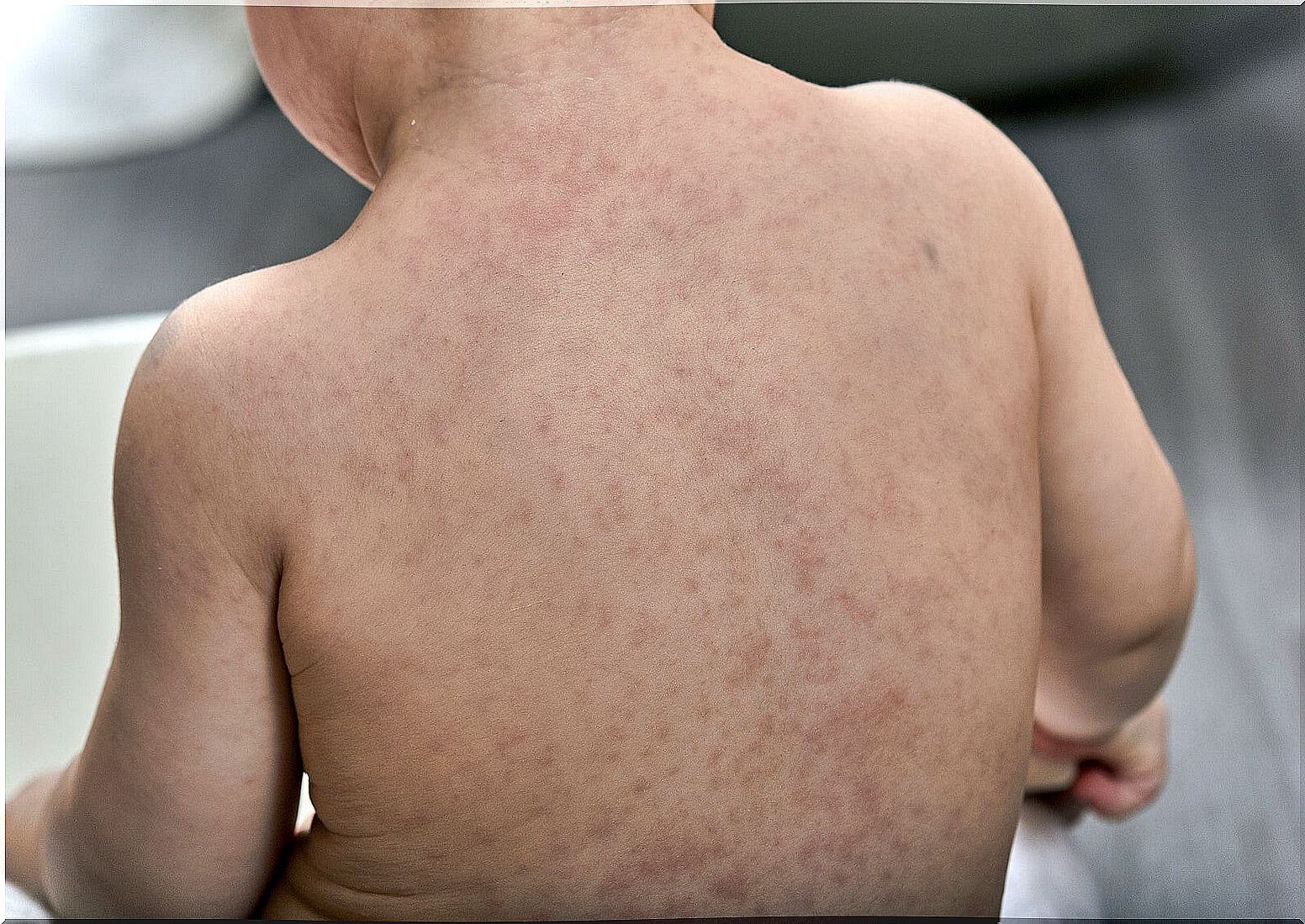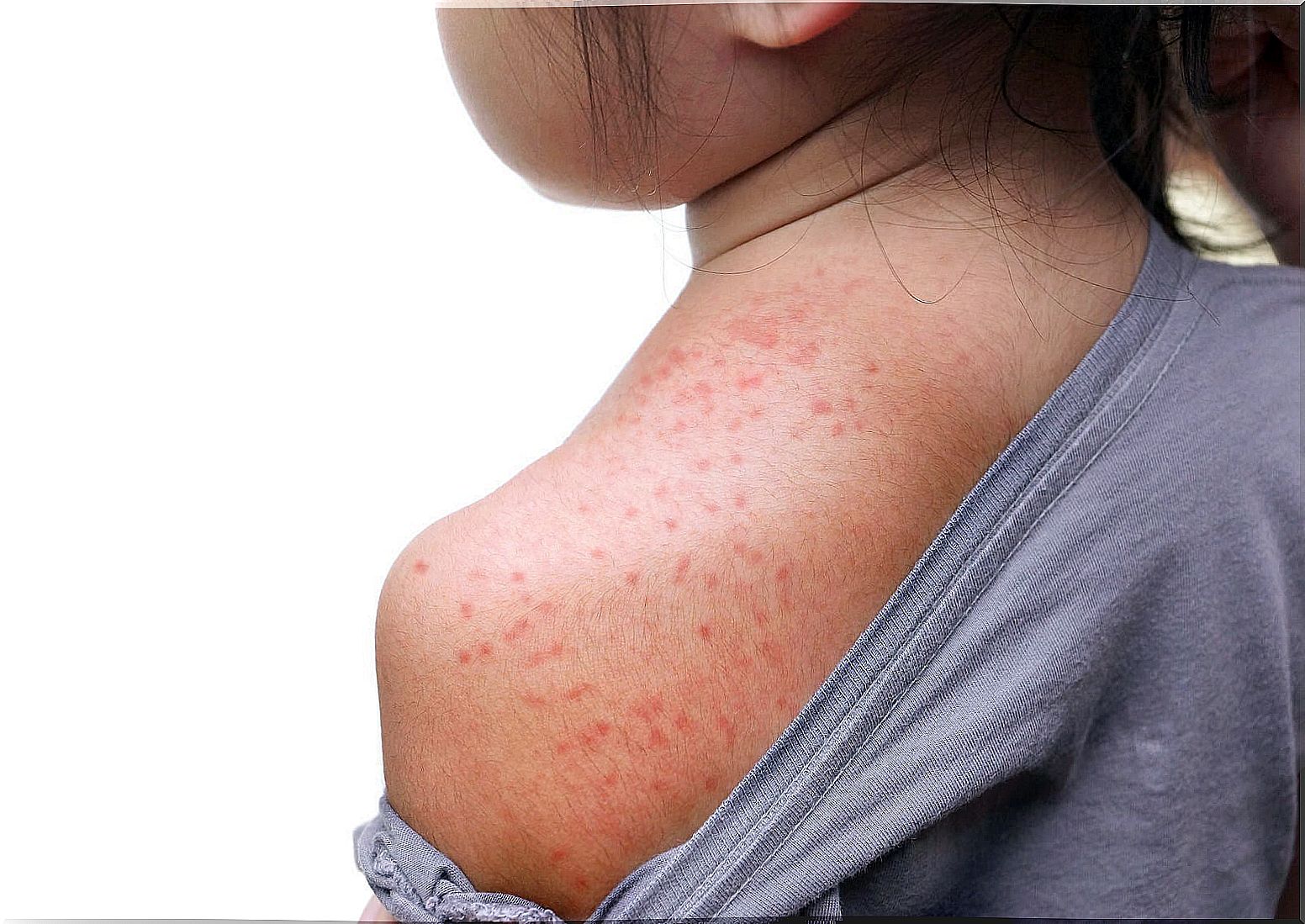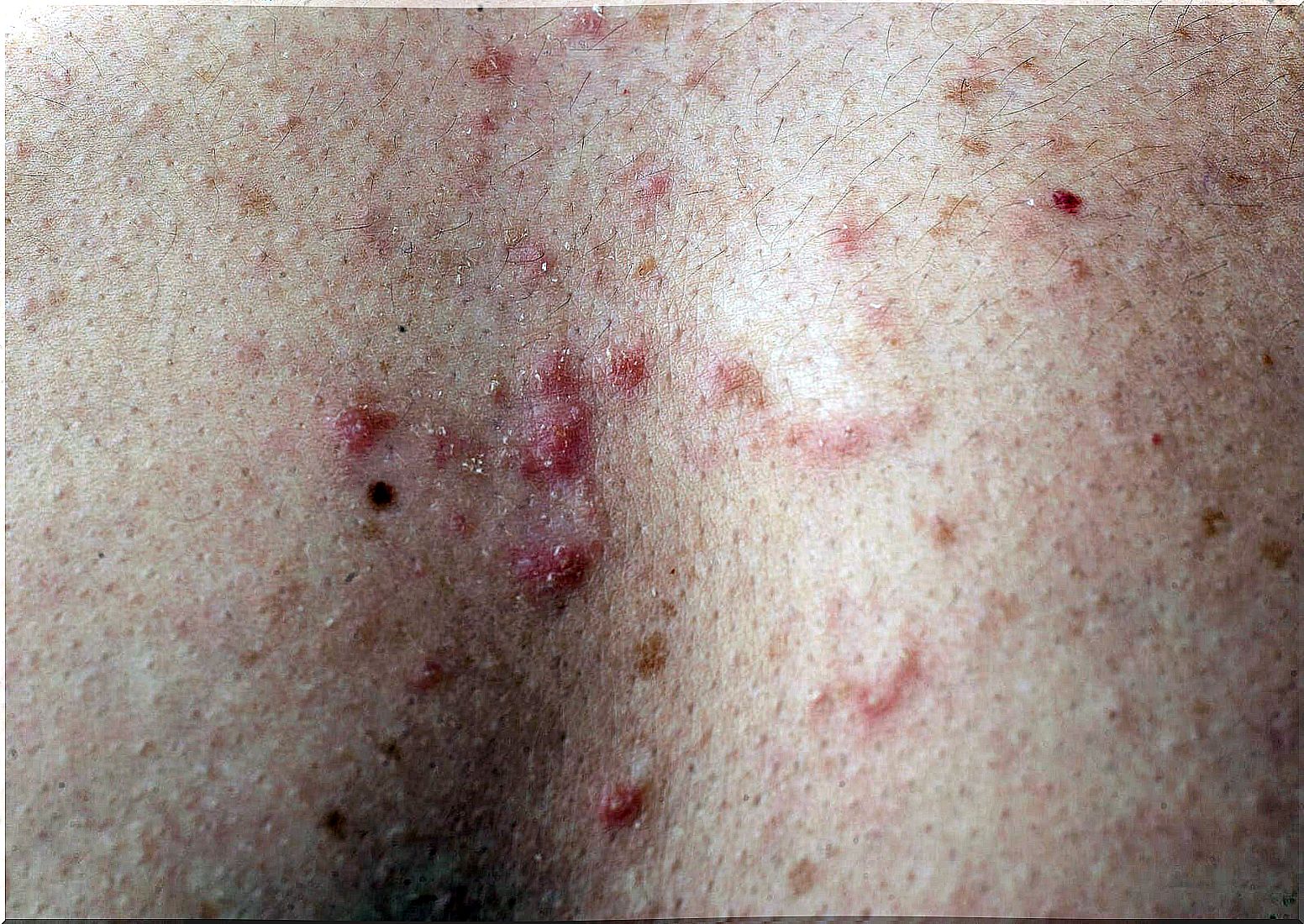What Is Gianotti-Crosti Syndrome?

Gianotti-Crosti syndrome is also known as papular acrodermatitis of childhood. It is an acute and benign eruption whose origin is linked to a great diversity of viral pathologies. It is characterized by papular lesions distributed throughout the body that usually resolve on their own after a few weeks. Here’s more about this rare disease.
Causes of Gianotti-Crosti syndrome
Gianotti-Crosti syndrome can occur after a wide variety of viruses. These viruses include, but are not limited to, cytomegalovirus, coxsackievirus, adenovirus, influenza, Epstein-Barr virus, echovirus, hepatitis A virus, HHV-6, herpes simplex virus, adenovirus, poxvirus, enterovirus, mumps, parainfluenza virus, rotavirus , syncytial virus and parvovirus B19.
Epstein-Barr Virus infection is the most frequently associated viral disease in the population, according to Pediatric Dermatology publications .
There are cases in the literature in which Gianotti-Crosti syndrome was triggered after an infant vaccination. Therefore, this pathology should not be ruled out if lesions of the same characteristics occur after immunization. However, it is often the case that no infectious trigger is identified.

Gianotti-Crosti clinical manifestations
Manifestations of the disease are seen more frequently in children under 4 years of age and with atopic diseases. Monomorphic, symmetrical, and acute papules, the same color as the skin to pinkish red, occur in the following body regions:
- Face.
- Buttocks.
- The extensor surfaces of the extremities.
These lesions range in size from 1 to 10 millimeters in size. In addition, there is the Koebner phenomenon, which accentuates injuries at the sites of trauma or scratching.
The arms are usually more affected than the legs. However, some of the areas of the body that are usually undamaged are the following:
- The log.
- The scalp
- Popliteal fossa.
- Antecubital fossa.
Extracutaneous symptoms
There may be fever, lymphadenitis, and other symptoms such as hepatomegaly, splenomegaly, or pharyngitis associated with or preceding the rash. It does not usually present lesions on the mucosa or nails. However, there are mucocutaneous characteristics of the viral picture that triggered the syndrome.
No specific findings are observed in the laboratory, except in the Epstein-Barr virus, the cytomegalovirus or the pathology that is linked to hepatitis, where there is a marked lymphocytosis or increased liver enzymes. Extracutaneous manifestations tend to persist longer than skin lesions.
Diagnostic criteria for Gianotti-Crosti syndrome
Gianotti-Crosti syndrome is diagnosed with the patient’s symptoms. There may be cases in which some clinical manifestations indicate the possibility of laboratory alterations.
There are some criteria to consider when arriving at the diagnosis. Some of them are the following:
- Lesions that persist for about 10 days.
- Papules that can measure 1 to 10 millimeters that are found in 3 of these 4 sites: cheeks or buttocks, extensor surfaces of the legs, or extensor surfaces of the forearms.
- Symmetric location of all pathology lesions.
According to the American Osteopathic College of Dermatology, a biopsy is not used very frequently, only in those cases of immunosuppressed patients or high-risk patients. However, biopsy findings are often nonspecific.
What are the therapeutic options?
It should be made clear that papular acrodermatitis of childhood is a benign and self-limited pathology. Symptoms usually last 2 to 4 weeks. Although in some cases new lesions can continue to be generated until week 8 or 11 after the disease begins.
In the vast majority of cases, the lesions tend to resolve spontaneously without active intervention and the treatment to be instituted is supportive. In turn, the rash disappears without leaving any residual effects or scars. In rare cases, hyperpigmentation or hypopigmentation can remain for a time even though the rash has resolved.

Corticosteroids
Lesions may resolve more quickly with the use of medium-intensity glucocorticoids. In addition, they should not be used for long periods of time to avoid adverse effects. Also, the use of corticosteroids can help reduce itching.
Antihistamines
Oral antihistamines are recommended to relieve itching symptoms. In this sense, calamine lotions are very useful for this function. Itching can contribute to the generation of new lesions through the Koebner phenomenon.
Final thoughts on Gianotti-Crosti syndrome
Gianotti-Crosti syndrome is seen infrequently. This may be due to its underdiagnosed condition. It is a benign pathology that resolves spontaneously, without requiring specific treatment.
In turn, it affects children between 1 and 6 years of age who have undergone viral processes with greater prevalence. Therefore, its most common etiology is related to the Epstein-Barr virus.










